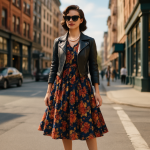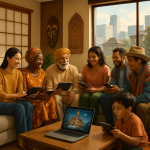
Hair accessories may seem like trivial embellishments today, but they have a history as rich as any other form of art or fashion. These trinkets have been used both as functional items and as symbols of status, power, and individuality across different cultures and eras. The journey of hair accessories from ancient utility to modern fashion statement is not only fascinating but also a testament to human creativity and cultural evolution.
The use of hair accessories dates back thousands of years. Ancient Egyptians, for instance, used elaborate headpieces and golden hairpins not just to keep hair in place, but to denote social status. Cleopatra herself was famous for her lavishly decorated wigs, often adorned with gold and precious stones. It wasn’t just the Egyptians; the Greeks and Romans had their own versions of hair accessories, each with distinct styles and meanings. The Greeks often wore hairbands made from gold or silver, sometimes featuring intricate designs of leaves or flowers. Meanwhile, Roman women used hairpins and combs made from bone, ivory, or metal, sometimes inlaid with jewels.
Cultural Significance and Symbolism
In many cultures, hair accessories have held deep symbolic meanings. In traditional Chinese culture, hairpins or “ji” were not merely decorative; they played a critical role in rites of passage. A Chinese woman would receive her first hairpin during her coming of age ceremony, known as “ji li,” signifying her transition from girlhood to womanhood. These pins were often crafted with great artistry, decorated with jade or pearls, and passed down through generations as family heirlooms.
Similarly, in Japan, the art of “kanzashi” decorative hairpins has a rich history. It wasn’t just about beauty, though; kanzashi were used in traditional Japanese tea ceremonies and were believed to have the power to ward off evil spirits. The design and placement of kanzashi would often vary according to the season and the wearer’s kimono.
Interestingly, hair accessories have also been used as a form of silent communication. In Victorian England, where overt expressions of love were frowned upon, lovers would exchange hair jewelry as tokens of affection. It’s like gifting heart-shaped lockets today, but with a bit more panache.
The Fashion Revolution
Fast forward to the 20th century, when hair accessories started to become more about fashion than function. The roaring ’20s saw the flapper headbands often adorned with feathers or sequins become all the rage, embodying the spirit of the Jazz Age. These accessories were not just for show; they were symbols of rebellion against the restrictive norms of previous generations.
The 1960s and 1970s brought a more laid-back vibe with the hippie movement, making way for floral crowns. These were not just accessories but political statements, embodying peace, love, and a connection to nature. I remember my aunt, who was a teenager during the 70s, talking about how she would spend hours weaving daisy chains. She’d sit in the park with her friends, each carefully crafting their own crown while discussing the latest Beatles album.
The 1980s may have been a time of big hair, but it was also the era of the scrunchie. Who could forget the fabric-covered elastic bands that were both gentle on the hair and available in every conceivable color and pattern? These accessories were so ubiquitous that the fashion world saw a resurgence of them in the late 2010s, thanks in part to nostalgic millennials (and perhaps the influence of ‘Friends’ reruns).
Modern Day Trends and Innovations
Today, hair accessories continue to evolve, blending traditional craftsmanship with modern innovation. With the influence of social media and platforms like Instagram and TikTok, hair accessories have become more diverse and accessible. Recently, the rise of statement headbands has been notable, thanks in part to the “royal effect” think Kate Middleton and Meghan Markle. Their understated yet elegant choices have inspired countless imitations.
Technology has also made its mark. We’re seeing hair accessories that incorporate smart tech, like temperature-sensitive clips that change color or barrettes with built-in LEDs. A friend of mine, always ahead of the tech curve, once sported a barrette that doubled as a Bluetooth headset. It was a neat gadget, though watching her take calls through her hair clip never failed to make me chuckle.
But let’s not forget the simpler pleasures. The resurgence of bobby pins and barrettes, glammed up with pearls or rhinestones, has brought a touch of nostalgia with a modern twist. These are often seen on runways and red carpets, proving that sometimes the old ways are the best.
Lessons from History
Reflecting on this colorful history, it’s clear that hair accessories are more than just fashion statements. They tell stories of the eras they belong to, reflecting societal changes and personal narratives. Hair accessories have been, and continue to be, a versatile form of self-expression, allowing individuals to communicate their identity, beliefs, and even emotions without saying a word.
As we embrace new trends, it’s worth remembering the rich tapestry of history that has shaped the hair accessories of today. Whether you’re pinning your hair up for a formal event or donning a casual headband for a day out, you’re participating in a tradition that’s as old as civilization itself. And who knows? The next hair accessory trend might just be another chapter in this ever-growing story.

